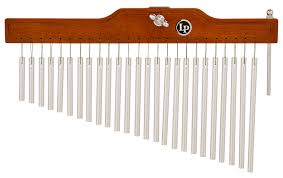
This weekend I got to see one of my musical heroes,
Kenny Garrett, play at the
Jazz Showcase in Chicago. Garrett is a post-bop alto saxophonist who has played with Miles Davis, the Duke Ellington Orchestra, and Art Blakey. He has a very successful solo career, most recently releasing
Seeds from the Underground, which features tributes to many of his mentors (including his high school band director!)
I got to the Showcase nice and early. It's a wonderful place to hear jazz--most everybody there is a serious jazz fan, and it's much more a listening room than nightclub. The band took the stage and immediately began blowing furiously. The standard pattern of attack was for Garrett to play a fairly simple, catchy tune over jazz harmonies that sound like a cross between McCoy Tyner and pop tunes. Then he would go into his solo that built from short phrases into longer, angular bebop lines and finished with frenzied wails and screams. He cut a striking figure in his black suit and trademark skull cap, bobbing up and down in time with his playing, giving hand signals to his band to control the intensity level. He also had an excellent percussionist who played everything from a variety of shakers and tambourines to a pair of congas and the wind chimes.

Now my band students will immediately tell you that I hate wind chimes. I usually refer to them as "the devil's plaything" because someone in the percussion section always bumps into them at the wrong time, and then you are stuck listening to their annoying tinkling for what seems like forever. Band composers use them way too much, in my opinion. Anyway, Garrett's percussionist, Rudy Bird, was a master at choosing just the right instrument to play just the right sound at just the right time. He gave me a new appreciation for the chimes.
I stayed for two sets. Garrett played a good amount of soprano sax as well and sounded great on a ballad later in the evening. The rest of the band was strong, too. The drummer, McClenty Hunter Jr., played furiously and non-stop. It was easily the loudest acoustic jazz performance I'd ever heard--like sitting through an intense thunderstorm from the safety of a screened-in porch. The music was certainly not for the timid, but if you like your jazz a little more avant garde, then I recommend you check him out.

Then Sunday morning, I had the pleasure of hearing a bell choir from
Augustana College play in our church. Bell choirs are not often heard outside of Protestant church services, but they are a fascinating ensemble. Each musician has two or more handbells to play, each one a different pitch of the chromatic scale. The bells range in size from tiny, fist-sized bells to giant ones bigger than a foot around. When you play in a bell choir, you look at a full score and only play when your notes come up. It's very challenging to be able to pick your individual notes out and play them in perfect time in the middle of the group. As band musicians, we're used to playing long lines of music--this is like performance by pointillism. The group from Augustana did a wonderful job, filling our sanctuary with their lovely ringing.
 This reminded me that every summer I say I'm going to the Chicago Botanic Gardens to hear one of their carillon concerts. A carillon is a bell tower, and every Monday night they bring in a professional ringer to perform their favorite selections on their 48-bell carillon. This year, for sure.
This reminded me that every summer I say I'm going to the Chicago Botanic Gardens to hear one of their carillon concerts. A carillon is a bell tower, and every Monday night they bring in a professional ringer to perform their favorite selections on their 48-bell carillon. This year, for sure.

